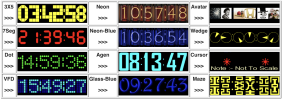antipodean
Active Member
Here's my contribution (attached)
Thanks BH, now I'll need to go back through the thread and work out how to install it.
Last edited:

Here's my contribution (attached)
That's only the start of the process. Each image needs four more at various stages of fade, and another few odds and ends besides. I've not got time.
The existing alternative screensavers (for examples) are in /mod/screensaver. Once you have a full set of files (they need to be named correctly so the system can identify them), and assuming you have the screensaver package installed, I think all you need to do is add a new folder (say "festive") alongside the others and then use the WebIF settings for screensaver to select it.
Relevant description here: https://hummy.tv/forum/threads/screensaver-alternatives-to-the-default-screensaver.2413/post-27964
The directory /mod/img contains all the images for the Humax UI (it is a bind mount to /opt/share/images/blue). Those starting with 82* are used by the screen saver. When a new screensaver is activated the 82* files are initailly replaced with the files from the 'Humax Default' screensaver to get everything to a known state. Then an install.sh script is run from whichever screensaver directory is to be activated. The install.sh script is responsible for replacing the Humax Default images with links to the newly activated screensaver files. This install.sh script could be customised in whatever way is required for a particular screensaver. As mentioned the Neon Blue uses single brightness levels so the different brightness levels in the img directory link to the same file in the source directory. The install.sh script performs this function.
If you have a similar structure to Neon Blue then you could copy install.sh to the new directory and change the SRCDIR line as appropriate.
Ah, OK, I might try that tomorrow while recovering from Christmas Lunch. Thanks for the explsnstion, I think that has brought it down to my level of ability.
I realised that, but (1) no time, and (B) no idea whether the graphics would stand out against black. It's not an easy thing to do: because of the anti-aliasing in the source material, the edge pixels are a blend between the white background and the colour of the graphic. Somehow that needs to be converted to a blend between the original colour of the graphic and a black background (or transparent), without knowing what the original colour would have been (or alternatively the degree of anti-aliasing), pixel by pixel.The white background in the digits in BHs file need to be made transparent or black.

Hate to pour cold water on somebody's effort, but I thought we already had a nixie set?

I would say there are many items that could be added to the Package list that would have limited appeal to others, I stopped adding extra screensavers when they started getting similar to ones already in the list and too numerous. I think the way forward would be for dma to upload a picture of his new screensaver to the forum and see how many users would like it to be added to the package list. I can assist dma with package submission, but I would point out that the repository is controlled by af123 and ultimately, it is not my decision
Ditto, it might be nice if someone, with a lot more artistic talent than me, could produce some seasonal screensaver sets so that we could have something appropriate for the time of yearI like the Christmas one best.
I've packaged it, and will give it a quick test when I get chance - probably tomorrow - then it can go in the repository. Are you happy with these fields in the control file?Nixie on top, Neon below. If you try my rendered ones as a screensaver, you'll see that they accurately reflect the look and feel of the old glowing tubes (even showing shadows of "unlit" numerals, just like the real thing). Neon is nicely drawn, just offering another set
Package: screensaver-Nixie
Maintainer: dibs
Description: A Nixie tube screensaver
Thank-you, yes - happy with that (assuming it works well for everyone else). I understand that people may not want to have too many options in the repository, in which case it would still be available here on the forum if anyone wanted it (and can be installed manually).I've packaged it, and will give it a quick test when I get chance - probably tomorrow - then it can go in the repository. Are you happy with these fields in the control file?
Package: screensaver-Nixie
Maintainer: dibs
Description: A Nixie tube screensaver
